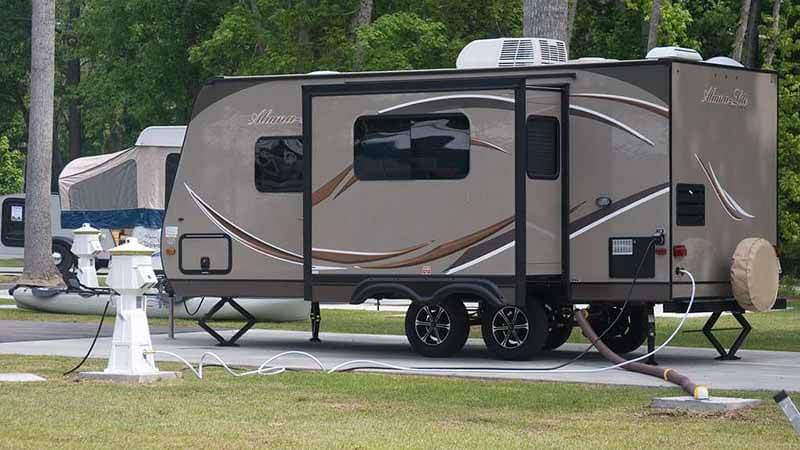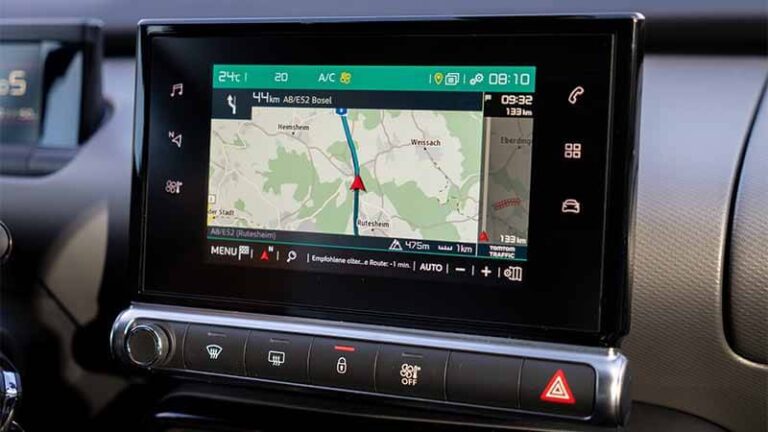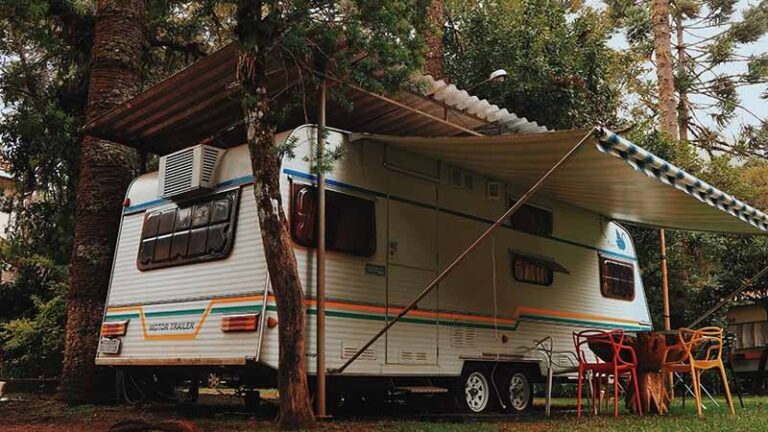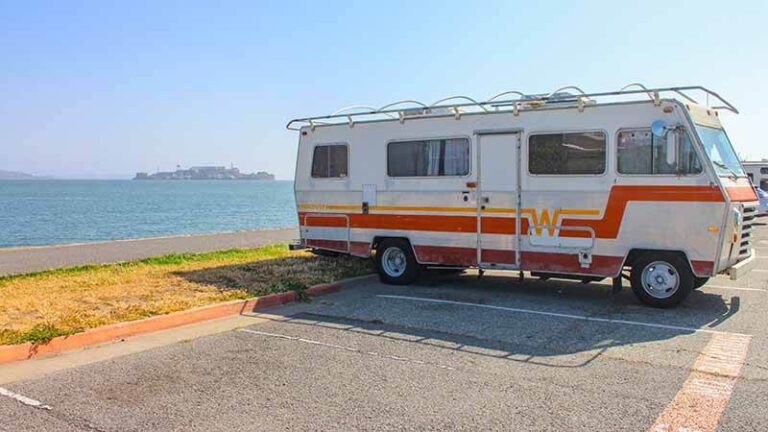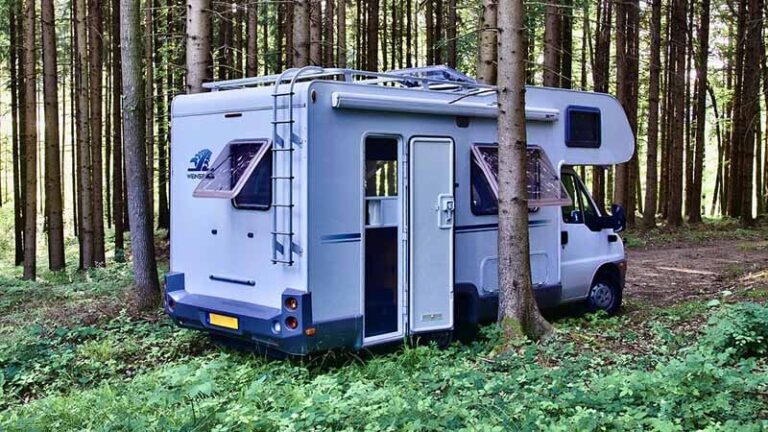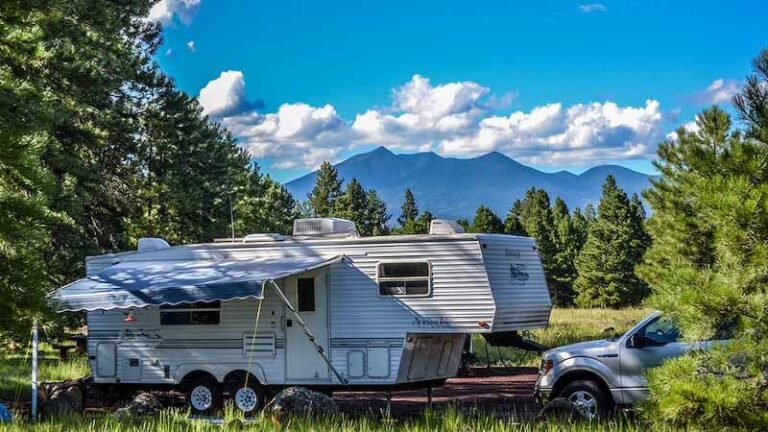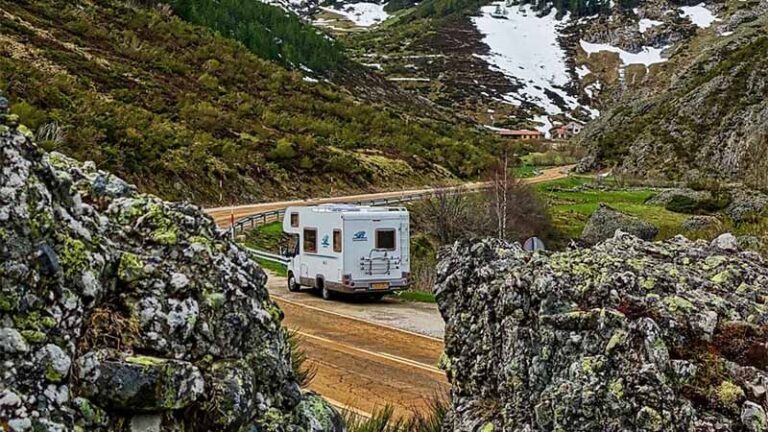How to Choose the Right RV for Your Needs
RVing has grown in popularity in recent years, with an increasing number of people choosing this way of travel and lifestyle. RVing (Recreational Vehicle-ing) is the practice of traveling or even living in a motorhome or trailer designed for both transportation and habitation.
The reasons for this developing trend are numerous and varied. One important cause is the growing desire for adventure and a nomadic lifestyle since RVing allows individuals and families to enjoy the beauty of nature, various landscapes, and a wide range of places while preserving the comforts of home on wheels.
Furthermore, the COVID-19 epidemic played a crucial impact in the rise in the popularity of RVing. Many individuals started looking for safer alternatives to traditional travel, and RVs provided a self-contained, controlled environment for travel and lodging.
This shift in mindset resulted in an increase in RV purchases and rentals, as more individuals recognized the independence and flexibility that RVing provides. Furthermore, the rise of remote work and the digital nomad lifestyle has created new opportunities for working while traveling, making RVing an appealing option for people seeking a work-life balance that combines discovery and adventure.
The sense of community shared by RV enthusiasts has also contributed to the appeal of RVing. Social media platforms, internet forums, and RV clubs have enabled like-minded people to connect, share stories, and offer advice, resulting in a supportive community that inspires others to start on their own RV adventures. All of these factors have contributed to an exponential increase in the number of people adopting the RV lifestyle.
Importance of choosing the right RV
Choosing the correct RV is a critical decision for anyone considering RVing, and it should not be taken lightly. The fact that an RV is not simply a vehicle but also your home away from home emphasizes the significance of making the right option.
While the appropriate RV might improve your vacation experiences, the wrong one can cause discomfort, trouble, and disappointment.
Personal comfort is the first reason to prioritize selecting the best RV. RVs are available in a variety of sizes and configurations, each with its own set of amenities and features.
Whether you’re a single traveler, a couple, a family, or a group of friends, the ideal RV should meet your individual needs, interests, and lifestyle. Sleeping arrangements, kitchen facilities, bathroom amenities, and storage space should all be in line with your comfort needs.
Second, safety is of the utmost importance. A poorly picked RV that does not suit your travel style or destination can jeopardize road safety. Overloading an RV, selecting the incorrect type for certain terrains, or failing to provide key features for specific conditions can all result in accidents or breakdowns.
As a result, choosing an RV that is appropriate for your intended use and travel plans is critical to ensuring a safe and happy voyage.
Furthermore, an RV is a substantial financial investment. It’s critical to find a happy medium between your budget and the features you want. Overspending on an RV with features you won’t use might put a burden on your money while underspending on an inferior RV can result in costly modifications or repairs later on. A well-thought-out decision ensures that you receive the most bang for your buck.
Understanding Your RV Needs
Determine your RVing goals and purpose
When commencing on the adventure of recreational vehicle (RV) ownership, determining your RVing goals and purpose is a key first step. This essential decision will guide all other RV decisions you make.
To begin, you must decide if you intend to utilize the RV for full-time living or for occasional vacations. Full-time living means that your RV will essentially serve as your primary dwelling, necessitating additional features and considerations than those who only use their RVs on occasion, such as vacations.
If you intend to live in your RV full-time, you should prioritize amenities and space that provide long-term comfort and convenience.
Consider whether you’ll be going alone or with family and friends. The number of people who will be utilizing the RV and their individual needs will have a big impact on the type and size of RV you should get.
Smaller, more compact RVs may suffice for lone travelers, however, larger RVs with greater sleeping and living space are often required for family or group travel. Choosing the scale of your RVing experience is critical for ensuring that your RV fits your lifestyle and tastes.
Consider your travel style and destinations
Your travel style and destinations will be important factors in picking the best RV for your needs. To begin, consider the length and frequency of your trips. Are you planning small weekend getaways or extended road journeys that could last weeks or even months?
Short journeys may allow you to prioritize comfort and convenience above storage and long-term sustainability, whereas longer road trips will necessitate a greater focus on storage capacity and durability.
Also, think about where you’ll be camping or parking your RV. Some RVers enjoy the convenience of full-service RV parks, while others want the excitement of boondocking in isolated regions without standard facilities.
If you choose the latter, you’ll need an RV equipped with solar panels, a generator, and expanded off-grid capabilities to assure self-sufficiency while traveling. If you choose to stay in RV parks, you can prioritize luxuries such as air conditioning, entertainment systems, and comfy sleeping arrangements.
RV Types and Classes
Different RV types
It is critical to grasp the many RV kinds available to you when exploring the world of recreational vehicles (RVs). These alternatives cater to various interests, needs, and lifestyles, ensuring that there is an RV for everyone. RVs are classified into the following categories:
Motorhomes
Motorhomes are self-contained vehicles that combine the living space and the driving component into a single vehicle. They are divided into three categories:
- Class A: The largest and most opulent RVs, which frequently resemble tour buses. They have vast interiors and numerous amenities, making them ideal for long-distance travel and full-time living.
- Class B: Class B motorhomes, sometimes known as camper vans, are small and easy to maneuver. They are an excellent choice for single travelers or couples searching for a more maneuverable RV.
- Class C: Class C motorhomes are sized between Class A and Class B and offer a good blend of space and agility. They are popular among families and frequently have a distinct over-cab sleeping area.
Travel Trailers
Towable RVs and travel trailers come in a variety of sizes, shapes, and amenities. They are often towed by vehicles or SUVs and provide a variety of choices to fit a variety of preferences and budgets. Travel trailers are versatile since they can be disconnected from the towing vehicle and used independently.
Fifth-Wheels
Fifth-wheel trailers are similar to travel trailers, but they are towed with a pickup vehicle equipped with a particular hitch. They frequently include a raised front part that extends over the truck bed, allowing for more living space. Fifth-wheels are popular among long-term RVers since they are roomy and comfortable.
Pop-up Campers
Pop-up campers, often known as tent trailers or fold-down campers, are towable RVs that are small and lightweight. They fold down for convenient hauling and storage before expanding into a pleasant living space with canvas sides. For those who want a more traditional camping experience, pop-up campers are a cost-effective solution.
Pros and Cons of Each RV Type
- Motorhomes provide the convenience of a vehicle and living space in one, making them ideal for people seeking a seamless travel experience. They are, however, costly to purchase and maintain, and larger models may be difficult to manage in narrow locations.
- Travel trailers come in a range of floor plans and sizes, making them a versatile option. They are frequently less expensive than RVs, but you will need a suitable towing vehicle. It takes time and practice to hitch and unhitch.
- Fifth-wheels have big interiors and are ideal for long-term stays. Their unusual hitch arrangement provides for stability and movement, but a pickup vehicle with a fifth-wheel hitch is required. Because of the length, parking can be more difficult.
- Because pop-up campers are lightweight and easy to pull, they are compatible with a wide range of vehicles. They are inexpensive and, thanks to their canvas sides, provide a close connection to nature. They may, however, lack certain facilities and may be less comfortable in adverse weather situations.
Matching the right RV type to your needs and preferences
Consider your budget, the number of travelers, the frequency with which you intend to utilize the RV, and the capabilities of your towing car. A Class A motorhome may be the right choice for you if you value luxury and convenience and don’t mind paying a premium.
Travel trailers provide a diverse range of options in terms of versatility and cost-effectiveness. Fifth wheels may be preferred by families or people wanting prolonged comfort.
Finally, if you’re on a low budget, prefer simplicity, and enjoy camping in the great outdoors, a pop-up camper could be the perfect choice. Your RV type should match your lifestyle, travel goals, and comfort needs to ensure a productive and happy RVing experience.
RV Size Matters
Importance of RV size
The size of your RV is an important consideration that will have a big impact on your overall RVing experience. The dimensions of your RV must be carefully considered because they have a direct impact on maneuverability, comfort, and practicality.
Choosing the correct RV size involves more than simply personal choice; it also involves practical concerns that might make or break your trip.
Considerations for RV length, width, and height
There are three basic parameters to consider when it comes to RV size: length, width, and height. Your RV’s length influences how easily you can maneuver different terrains, campgrounds, and parking lots.
Longer RVs normally have greater living space, but they can be difficult to move in compact locations and may have parking restrictions. Width is also important for maneuverability, particularly on small highways or when overtaking other cars.
A wider RV may be more spacious on the inside, but it may necessitate greater attention when driving. Furthermore, the height of your RV must be considered while selecting routes, since low clearance bridges or tunnels can provide a substantial challenge.
Parking and storage considerations
Parking and storage are critical components of RV size. When choosing an RV, consider where you will store it when not in use. Larger RVs may have specialized storage or larger parking areas, which can raise your overall costs.
Furthermore, if you intend to stay in a campground or RV park, keep in mind that some sites may have size restrictions, which may limit your options if you have a big RV.
Maneuvering a huge RV onto a campsite can also be difficult, so it’s critical to evaluate your driving and parking abilities, as well as your comfort level with greater proportions.
Furthermore, if you want to boondock or camp in remote areas, the size of your RV may limit your ability to enter specific areas. Larger, wider RVs may be unable to navigate narrow roads or rugged terrain. Smaller, more compact RVs frequently have an edge in terms of accessibility and flexibility when it comes to finding isolated areas.
Floor Plan and Layout
The significance of floor plan
Your RV’s floor plan is an important component of your entire RVing experience. It determines how you’ll use and maneuver the inside space, affecting your RV’s comfort, convenience, and functionality. Choosing the correct floor layout is critical since it can significantly impact how much you enjoy your vacation.
Different floor plan options
Open concept vs. segmented
Some RVs have an open-concept plan in which the living, dining, and kitchen areas flow together to create a sense of space. Others have a segmented layout with discrete rooms and partitions, which allows for additional privacy and isolation between regions. If you value a more community vibe or want designated spaces within your RV, you will prefer open or divided spaces.
Bedroom location
The location of the RV’s bedroom varies. Some RVs have beds in the back, while others have bedrooms in the front or midship. Rear bedrooms may provide more privacy and quieter sleeping quarters, although front bedrooms may enable better access to the main living area of the RV.
Midship bedrooms are frequently used as a compromise, providing a balance of solitude and accessibility. Your desire for comfort and convenience should guide your decision.
Kitchen and bathroom layout
The layout of the kitchen and bathroom in an RV can vary greatly. Some RVs have galley kitchens, while others have island kitchens or L-shaped layouts. The bathroom can be a separate room or part of the living area.
When analyzing these layouts, consider your cooking routines, storage requirements, and bathroom preferences.
How to choose a floor plan that suits your lifestyle
Begin by examining your individual needs and preferences in order to select a floor plan that fits your lifestyle. Consider the amount of travelers and their privacy and space preferences. If you enjoy cooking, search for a kitchen design with plenty of surface space and storage.
If you intend to entertain visitors, an open-concept style may be better. Consider how you’ll use the RV on a regular basis and which characteristics are essential for your comfort.
Consider your regular routines in the RV and how the floor arrangement aids them. To get a sense of how each layout would function for you, imagine moving around, using the toilet, making meals, and sleeping in the RV.
Visit RV dealerships or RV shows if feasible to get a firsthand look at different types and layouts. Finally, selecting the correct floor plan is a highly personal decision that should correspond with your specific lifestyle, needs, and tastes, ensuring that your RV becomes a comfortable and functional home away from home while on the road.
Must-Have RV Features
List essential features to consider
Certain vital elements should be prioritized when choosing an RV to ensure comfort and functionality during your travels:
Sleeping arrangements
Ascertain that the RV provides comfortable and appropriate sleeping alternatives for all travelers. This could mean a dedicated bedroom with a comfy mattress, a convertible dinette or couch bed, or bunk beds for families, depending on your needs. A decent night’s sleep on the road requires adequate sleeping arrangements.
Kitchen Appliances
A well-equipped kitchen can make your RVing experience more enjoyable. Look for necessities such as a refrigerator, stove or cooktop, oven or microwave, and a sink with hot and cold running water. The kitchen’s size and layout should meet your culinary tastes as well as the number of people you’ll be feeding.
Bathroom amenities
A working bathroom is necessary for maintaining hygiene and ease while traveling. Check if the RV has a toilet, sink, and, depending on your tastes, a shower or tub. The bathroom’s size and features should correspond to your comfort levels.
Entertainment options
Consider entertainment elements such as a TV, DVD player, sound system, and connectivity possibilities for streaming or gaming, depending on your tastes. These attractions can keep you busy during downtime at the campsite or in inclement weather.
Optional features based on personal preferences
Individual interests and travel methods can substantially influence optional options. Consider the following optional features:
- Solar panels: For off-grid camping with less dependency on electric hookups.
- Slide-outs: When parked, these extendable parts of the RV provide additional living space.
- Outdoor amenities: Features such as an outdoor kitchen, an awning, or an entertainment system can improve your outside experience.
- Generator: Provides electricity when the boat is not linked to shore power, allowing for greater self-sufficiency.
- Climate control elements such as air conditioning and heating are critical for comfort in a variety of weather conditions.
- Washer and dryer: Excellent for long journeys or full-time RV living.
- Storage solutions: Having additional storage alternatives might help you keep organized and bring critical equipment with you.
Balancing features with budget considerations
When acquiring an RV, it is critical to balance features with economic constraints. While it may be tempting to go all out, it is critical to keep within your budget. Begin by selecting and prioritizing your must-have features. Then, think about which supplementary options would improve your experience without stretching your budget too thin.
Remember to account for continuing costs such as maintenance, insurance, and campground fees. Careful financial planning ensures that you can enjoy your RV without undue financial stress, achieving a balance between desired amenities and economical reality.
Setting a Realistic Budget
The importance of budgeting
Budgeting is an essential stage in the RV owning and travel process. It is critical since it serves as the foundation for the entire RVing experience. Without a reasonable budget in place, you risk overspending, financial stress, and maybe having to make compromises that interfere with your pleasure on the road.
Setting a budget is thus more than simply a practical consideration; it is a strategic decision that guarantees your RV lifestyle is both sustainable and pleasurable.
The cost of different RV types
The cost of various RV kinds might vary greatly, therefore it is critical to match your budget to your chosen RV type. Class A motorhomes, for example, are typically the most expensive, followed by Class C motorhomes, fifth-wheels, travel trailers, and pop-up campers, which are typically the most affordable alternative.
It is critical to conduct research and pricing comparisons for the precise RV type and model that meets your requirements. When determining your budget, don’t forget to include any additional charges, such as taxes and fees.
Additional expenses to consider (insurance, maintenance, campsite fees)
Aside from the initial purchase price, there are a number of continuing costs connected with RV ownership. Insurance, maintenance, and campground costs are among them.
RV insurance is required to protect your investment and offer liability coverage, and the cost varies depending on criteria such as the type of RV, policy limits, and location. Maintenance fees cover routine service, repairs, and upgrades that are required to keep your RV safe and operational.
The cost of a campsite varies based on the campground, with premium sites or resort-style campgrounds often costing more than basic, no-frills options. Include these costs in your budget to ensure you’re financially prepared for the entire RVing experience.
Tips for financing or buying within your budget
Consider the following suggestions for financing or purchasing an RV within your budget:
- Begin by gaining a thorough overview of your financial condition, including your income, previous debts, and other financial responsibilities. This will assist you in determining how much money you can easily devote to RV ownership.
- Comparison shop for the greatest deals and financing alternatives. RV dealerships, banks, and credit unions all provide financing, so compare interest rates and terms to get the best deal.
- Consider purchasing a secondhand RV. Pre-owned RVs are frequently less expensive than new ones and can still give years of enjoyment. Make certain that any used RV you are considering has a thorough inspection to determine its condition.
- Be willing to compromise. RV dealers may be ready to offer discounts or include extra features as part of the package. Negotiating can assist you in getting the most bang for your buck.
- Make a precise budget that takes into account all RV-related expenses, such as monthly loan payments, insurance premiums, maintenance, and campsite fees. To avoid overpaying, stick to this budget.
Inspecting an RV Before Purchase
The importance of a thorough inspection
It is critical to conduct a comprehensive check of an RV before purchasing it. An RV is a substantial financial investment, and its health can have a considerable impact on your safety, comfort, and overall enjoyment of the RVing experience.
A thorough inspection identifies any potential flaws or concerns, allowing you to make an informed decision and avoid costly surprises down the road.
Checklist for inspecting a new or used RV
When evaluating a new or used RV, it’s critical to utilize a checklist to verify that no important details are neglected. Here’s a general RV inspection checklist:
Exterior Inspection
- Examine the walls and roof for evidence of water damage, such as mushy areas or discoloration.
- Examine the tires for wear and damage, and make sure they are properly inflated.
- Examine the chassis and undercarriage for signs of rust or corrosion.
- Inspect the windows, doors, and seals to verify they are watertight.
- Check the awning’s condition, if applicable.
Interior Inspection
- Run all appliances, including the stove, oven, refrigerator, microwave, and heating/cooling systems, through their paces.
- Check for leaks in the plumbing system, including faucets, toilets, and the water heater.
- Inspect the electrical system to ensure that all lights, outlets, and switches function properly.
- Look for signs of damage or wear on the ground, walls, and ceilings.
- Check that the slide-outs (if any) work smoothly.
Mechanical and Systems Inspection
- Examine the engine and transmission (in the case of motorhomes) or the hitch and towing components (in the case of towable RVs).
- Make sure that the generator (if equipped) is working properly.
- Check the condition of the brakes, suspension, and steering (if applicable).
- Check for leaks and damage to the propane system and tanks.
- Check that the RV’s leveling system, if present, works properly.
Documentation Review
- Obtain maintenance and servicing records in order to evaluate the RV’s maintenance history.
- Verify that all required documentation, such as titles, registration, and manuals, is present and in order.
Common red flags to watch for during an inspection
It is critical to remain cautious throughout the examination for common red flags that may suggest prospective problems or concealed concerns with the RV. Among these red flags are:
- Water damage evidence, including stains, mildew, or mushy patches.
- Rust, corrosion, or significant wear on the chassis or undercarriage.
- Uneven tire wear, which could suggest a problem with the alignment or suspension.
- Defective or inoperable appliances and systems.
- Indicators of neglect or a lack of maintenance, such as worn-out tires or filthy filters.
- Maintenance records that are incomplete or inconsistent.
- A strong stench within the RV could be a sign of mold, mildew, or other problems.
- Previous accident or damage evidence, such as patched walls or mismatched paint.
Negotiating the Best Price
Tips for Effective Negotiation
When purchasing an RV, effective bargaining is essential since it can save you money and help you get the best price possible. Here are some pointers for good bargaining:
- Do Your Homework: Thoroughly research the RV you’re interested in. Learn about its market value, common problems, and optional extras. Knowing the value of a specific RV model puts you in a good negotiating position.
- Create a Budget: Create a budget and stick to it. Determine how much you’re willing to spend on the RV and factor in all associated expenditures, such as taxes, registration, and any improvements or repairs required.
- Be Patient: Negotiation frequently needs time and patience. Take your time exploring different possibilities and comparing prices before making a decision.
- Begin with a Reasonable Offer: Based on your study, begin talks with a fair and reasonable offer. Making a ridiculously low offer can occasionally irritate sellers and stymie the negotiation process.
- Inquire: Learn about the RV’s history, upkeep, and any problems it may have. Use this information to your advantage during negotiations, particularly if repairs or maintenance are required.
- Be Willing to Walk Away: Being willing to walk away from a transaction is sometimes the best negotiation approach. If the seller is unwilling to fulfill your requirements or if you have concerns about the RV’s condition, don’t be afraid to back out.
- Take Advantage of Timing: Be mindful of external circumstances that can influence talks, such as the conclusion of the RVing season, when sellers may be more motivated to make a deal.
Researching RV values
RV value research is an important part of effective negotiation. There are numerous tools available to assist you in determining the fair market value of the RV you’re interested in. Consider the following steps:
- Online Research: Gather information on the prices of similar RVs in your area by using RV pricing websites, forums, and classified advertising. Websites such as NADA Guides and RVTrader can be extremely useful.
- Examine the RV’s Condition: Take into account the RV’s age, mileage, general condition, and any upgrades or changes. These elements can have a substantial impact on its worth.
- Refer to RV Pricing guidelines: RV pricing guidelines provide approximate values for various RV models based on their year, make, model, and amenities. These resources might provide you with a ballpark price to begin your talks.
Understanding market trends and seasonal pricing
Understanding market trends and seasonal prices can also help you negotiate more effectively. RV costs might fluctuate depending on market demand and season:
- Seasonal Pricing: RV costs can vary according to the season. Prices in many areas tend to be higher during the spring and summer when demand for RVs is at its greatest. In contrast, you may be able to locate better discounts during the off-season or in the fall and winter.
- Market developments: Keep an eye on market and economic developments. Sellers may be more inclined to negotiate during times of economic uncertainty, whereas prices may be less flexible during times of economic strength.
- Regional Variations: Because of factors such as local demand, temperature, and availability, RV pricing might vary by region. Price research in your unique region will help you have a better grasp of the local market.
Conclusion
Finally, while commencing on the wonderful path of RV ownership is an exciting concept, it also demands careful planning and consideration. In this blog post, we’ve covered everything from analyzing your RV needs and selecting the proper type to creating a realistic budget, thoroughly checking the RV, and mastering the art of negotiating.
You set the stage for a successful and fulfilling RVing experience by taking the time to evaluate your individual RVing goals, travel style, and budget limits. Whether you’re looking for cross-country trips, weekend vacations, or full-time RV living, it’s critical to match your RV to your lifestyle and interests.
Furthermore, knowing the ins and outs of RV inspection and negotiating allows you to make informed judgments and get the best bargain possible. A thorough inspection guarantees that your RV is in excellent condition, while effective bargaining can save you money and give you peace of mind.
Remember that RV ownership is about more than just the destination; it’s also about the trip. You may create lasting memories and experiences while exploring the open road in your RV with careful planning, intelligent contemplation, and a dash of adventure.

